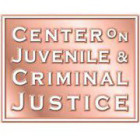
“Crossover Youth”: The Intersection of Child Welfare & Juvenile Justice
|
Crossover youth is more than the latest buzzword in the often jargon-filled lexicon of juvenile justice. Instead, the term reflects a growing understanding of the dynamic between child abuse, neglect and delinquency. This population of young people has contact with both the child welfare and juvenile justice systems.
Addressing child welfare is challenging enough, let alone when joined with deeper problems of delinquency. Abused young people often carry scars of trauma and pain, which can inform delinquent behavior that leads to subsequent contact with the juvenile justice system. However, the complex challenges and needs of crossover youth often prove too much for each system alone to address.






